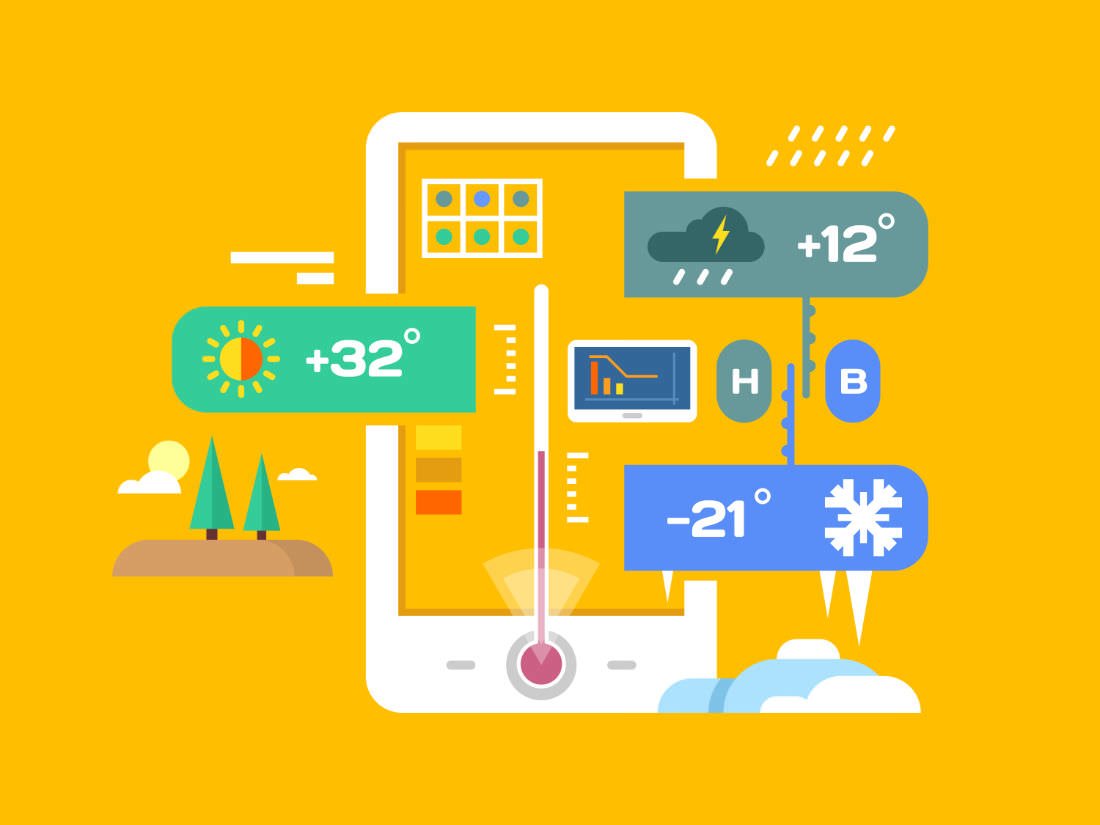Temperature Converter
Temperature conversion is fundamental to science, technology, and daily life. It involves changing a temperature reading from one scale to another. Celsius, Fahrenheit, Kelvin, and Rankine are the most commonly used temperature scales.
Share on Social Media:

The Intricacies of Temperature Conversion: Celsius, Fahrenheit, Kelvin, and Rankine
Temperature conversion is fundamental to science, technology, and daily life. It involves changing a temperature reading from one scale to another. Celsius, Fahrenheit, Kelvin, and Rankine are the most commonly used temperature scales. These scales are paramount in different fields and regions around the globe, making temperature conversion a crucial skill. This article will delve into the intricacies of temperature conversion, focusing on the four primary scales: Celsius, Fahrenheit, Kelvin, and Rankine.
The Celsius Scale
The Celsius temperature scale, or the centigrade scale, is the most widely used globally, especially in scientific applications. It is based on the freezing point of water at 0 degrees and the boiling point at 100 degrees under normal atmospheric pressure. This scale is used in most countries worldwide, except for the United States, which primarily uses the Fahrenheit scale.
The Fahrenheit Scale
The Fahrenheit scale, developed by Daniel Gabriel Fahrenheit in the early 18th century, is predominantly used in the United States. This scale sets the freezing point of water at 32 degrees and the boiling point at 212 degrees. This scale is based on a brine solution mixture, where zero degrees Fahrenheit was the coldest temperature achievable. The Fahrenheit scale is often seen as less intuitive than the Celsius scale due to its less straightforward freezing and boiling points.
The Kelvin Scale
The Kelvin scale, named after the British physicist Lord Kelvin, is the primary temperature scale used in physical sciences. Unlike the Celsius and Fahrenheit scales, relative to water's freezing and boiling points, the Kelvin scale is an absolute temperature scale based on absolute zero, the theoretically lowest possible temperature where all molecular motion stops. Zero Kelvin (0K) is equivalent to -273.15 degrees Celsius. This scale does not use the term "degrees"; temperatures are called "kelvins."
The Rankine Scale
The Rankine scale, named after the Scottish engineer and physicist William John Macquorn Rankine, is an absolute temperature scale primarily used in engineering, particularly in the United States. Like the Kelvin scale, it starts at absolute zero, but its temperature increments are the same as the Fahrenheit scale, making it easier to use with Fahrenheit measurements. Zero Rankine (0R) is equivalent to -459.67 degrees Fahrenheit.
Temperature Conversion
Converting temperatures between different scales is a straightforward process involving simple mathematical formulas.
To convert from Celsius to Fahrenheit, multiply the temperature by 9/5 and then add 32. Conversely, subtract 32 from the Fahrenheit temperature and multiply by 5/9 to convert from Fahrenheit to Celsius.
Converting from Celsius to Kelvin involves adding 273.15 to the Celsius temperature. To convert from Kelvin to Celsius, you subtract 273.15 from the Kelvin temperature.
Converting from Fahrenheit to Rankine involves adding 459.67 to the Fahrenheit temperature. You subtract 459.67 from the Rankine temperature to convert from Rankine to Fahrenheit.
To convert from Celsius to Rankine, you first convert the Celsius temperature to Fahrenheit and then to Rankine. To convert from Rankine to Celsius, you first convert the Rankine temperature to Fahrenheit and then convert it to Celsius.
Similarly, to convert from Fahrenheit to Kelvin, you first convert the Fahrenheit temperature to Celsius and then convert to Kelvin. To convert from Kelvin to Fahrenheit, you first convert the Kelvin temperature to Celsius and then convert it to Fahrenheit.
Temperature conversion is crucial in many fields, from scientific research to everyday activities like cooking or weather forecasting. Understanding the different temperature scales - Celsius, Fahrenheit, Kelvin, and Rankine - and how to convert between them can help ensure accurate and meaningful temperature measurements. Whether you're a scientist working in a lab, an engineer designing a new system, or someone trying to understand a weather forecast from another country, mastering temperature conversion is functional.